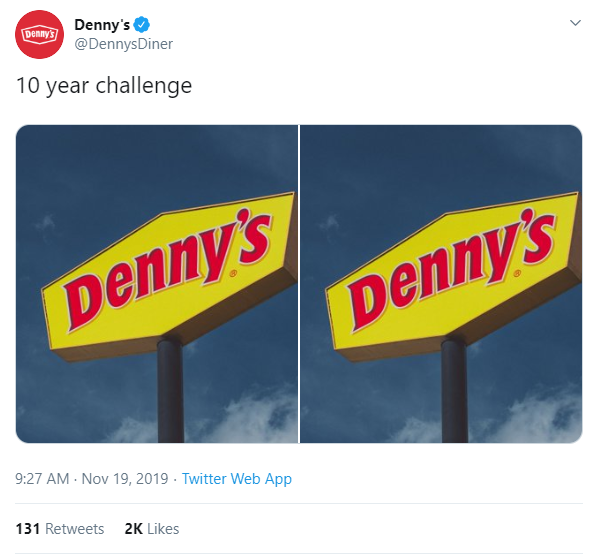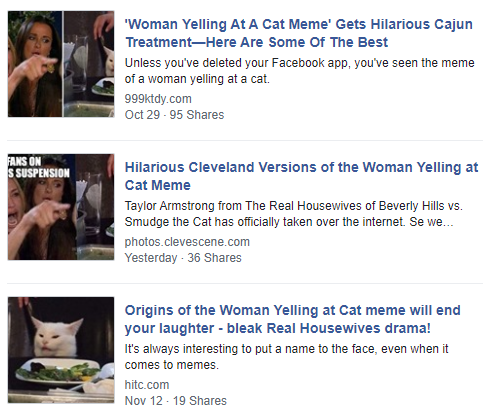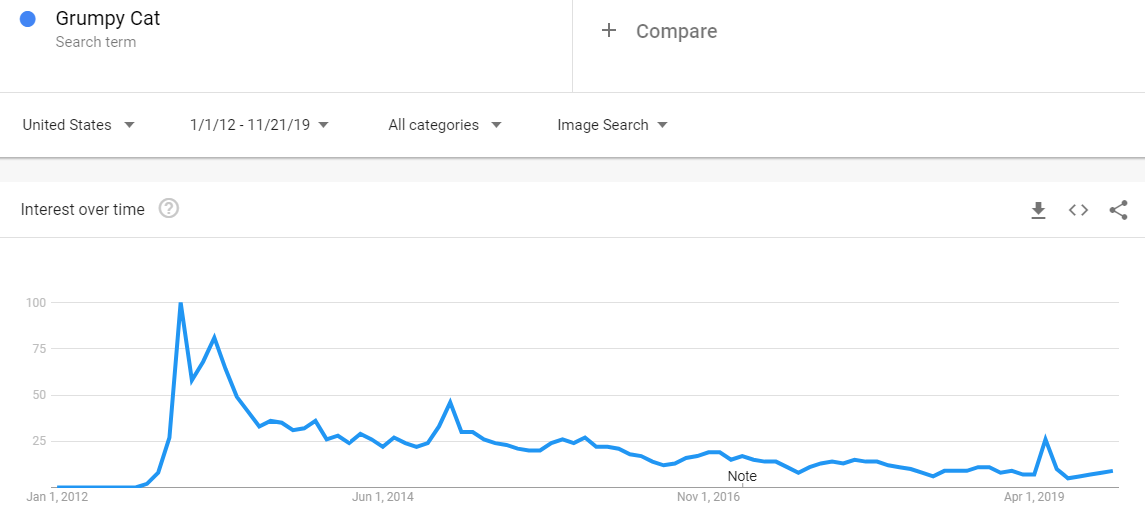You’ve laughed over memes, shared them, and perhaps even considered using memes in your content marketing efforts. Memes represent a form of visual communication, similar to telling a well-timed joke to a group of friends. But, we’ve all been privy to a co-worker’s joke, funny or sarcastic, that fell flat. Or worse, it was followed by corrective action.
When used correctly, memes delight your audience and help you build genuine relationships. People share, laugh, and believe that your brand really gets their sense of humor. On the other hand, tone-deaf copy or jokes around sore subjects may trigger your audience resulting in an outcry on social media.
Before producing memes, nail down your content marketing objectives. Then, dive into your audience data and come up with memes that add value and support your marketing strategy. Getting edgy isn’t for the faint-hearted, but by understanding the do’s and don’ts of meme marketing, you’ll protect your brand reputation, have a little fun, and (hopefully) make new friends.
What Good is a Meme to Marketers?
By some accounts, memes provide massive potential for brands. Anushk Mittal, the founder of Memois, told Forbes, “Our regular marketing graphics yielded 5% engagement [on Facebook and Instagram]. Using memes, we had about ten times more reach with 60% organic engagement.” Figures like these are why big brands, from Ruffles to Netflix, create and share memes.
However, another study reports that marketers list GIFs and memes as having the lowest engagement rates, suggesting that there’s a disconnect between marketing and successful meme creation. The thing is that consumers are savvy and fickle. They’ll sniff out an overly promotional message and call out a bad take on a current topic. Producing a viral meme requires an understanding of your audience and the qualities of a shareable meme.
The Ingredients of a Meme and Your Audience
A meme can include a combination of any number of elements, including image, text, videos, photos, hashtags, and GIFs. However, sharing a photo with a funny thought bubble doesn’t equate to a meme. A meme isn’t a specific type of media. Instead, it’s the act of sharing that leads to its meme status. Memes are:
- Replicable and easily imitated or adapted by others.
- Quickly shared across multiple channels.
- Applicable to popular culture and current events.
- Relevant to your audience with some staying power.
On a deeper level, “the most successful memes emerge out of and resonate with our collective consciousness, and because of this, they reinforce and strengthen social ties and ultimately, social solidarity.” The bottom line is that creating a meme as part of a marketing strategy relies on timing and deep audience insights.
Why Timing is (Usually) Everything When Marketing With Memes
Every day millions of photos get uploaded to Facebook and Instagram, and consumers scan hundreds or thousands of images, videos, and multi-media ads. Meme marketing is no different from a traditional digital marketing strategy. Anything you serve up to your audience needs to come at the right time, in the right place, and with the right media.
For the discerning and weary viewer, timing plays a role. It’s not only about knowing when your audience is online but also about using your social listening skills and having your finger on the pulse of trends. Adding memes to your marketing strategy involves noticing a trend, how that fits into your brand, and acting on it. But, you don’t want to jump in too early when it hasn’t caught on or too late when the market is saturated.
Some reports suggest meme popularity peaks in 24-hours. Then you have memes like Grumpy Cat, first introduced in 2012 and peaking again in 2019. Just like a good story or joke, a popular meme, when done right, can stick around indefinitely.
As a digital marketer, longevity is great. Any media that’s repurposable adds value. But don’t discount the value of short-lived popularity when combined with a broader campaign. Meme marketing that extends your reach while sharing your brand messaging can assist various parts of your content marketing efforts, and a lot can happen in 24-hours. Use these tips to entertain, engage, and invoke emotion in your audience while avoiding a marketing mistake.
Do’s & Don’ts of Memes in Marketing
Although the timing is pretty darn important, other crucial factors can make or break your content marketing strategy. By learning the basics and putting effort into meme creation and promotion, you’ll increase its overall value while avoiding the critical mistakes made by brands.
Do: Know Your Audience
Understanding what makes your audience laugh or why they share helps you design relevant memes that add real value to your marketing campaign. The key is to generate emotional investment immediately. That’s pretty hard to do if you don’t know enough about your audience. Go beyond the demographics and learn about their behavior.
- What do they watch on social media platforms?
- How many times does your audience share posts or enter your drawings?
- What other brands do they follow?
- How do they spend their free time?
- What tv shows, books, or music interests them?
Do: Understand a Meme’s Lifecycle
There’s only so many times your brand can share the same meme on its social channels. If your meme fails to attract your audience’s attention and garner enough shares, then it’s not a big help to your content marketing goals. The thing is that many memes directly relate to the moment. Those popular Bird Box memes are mostly a thing of the past, and the cat memes are getting to a saturation point as well. An excellent way to gauge the popularity of a meme is to use Google Trends and deliver your meme before the cycle peaks.
Do: Replicate Successful Memes and/or Create Originals
Meme jacking is the art of replicating popular memes. This works well when you choose content that resonates strongly with your audience and is easily recognizable. Several big brands do this with tremendous success. In the example below, Denny’s shared its take on the 10 Year Challenge. As long as the meme fits with your audience and suits your brand image, then jump on it.

You can also design original memes for huge brand visibility. You’ll find dozens of free meme creators online. Plus, popular image programs, like Canva, offer meme creation also. But, reinventing the meme wheel can be challenging. You need that perfect mix of trendiness, design, and copy. A good way to introduce original memes to your content marketing strategy is by A/B testing, then sharing your top-performing meme with the masses.
Don’t: Meme Just For Vanity Numbers
Memes might take a few minutes or a few days in creation, then more effort for social media copy and hashtags. All of that equals money and less time available for other types of content marketing. So don’t make memes without knowing what value it’ll bring to the table. Instead of looking at overall page views or likes on social channels, consider tracking your:
- Click-through-rate from various social channels
- Time spent on your website or product pages
- Percentage of your audience that engages with your post
Don’t: Copy & Paste Without Adding to the Meme
Sharing the exact same meme already out there is just a retweet or a share. Put your spin on a current trend by adding copy that mimics your target audience. The screenshot below lists a few creative examples of the cat meme that making the rounds. Apparently, you can find cat memes for audiences in Cleveland, with a Cajun theme, or even for fans of the Real Housewives.

Conclusion
Memes assist your social media campaigns and support your content marketing strategy. But, if done wrong, then you risk backlash or total disinterest. Invest in understanding your audience then deliver more of what makes them laugh, engage, and share with their friends.
Get Help from Woobox Support
Have questions about meme marketing for your promotions? Our Woobox Support team is available to help from 8 AM until 5 PM PST, Monday through Friday at 1-360-450-5200. You can also send an email to support@woobox.com.

